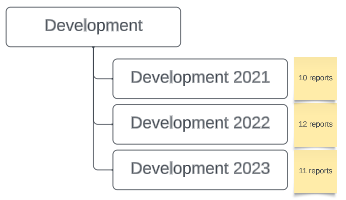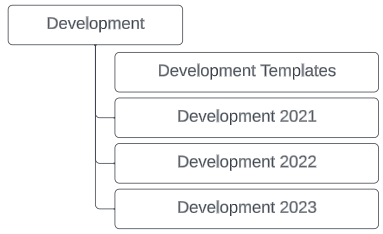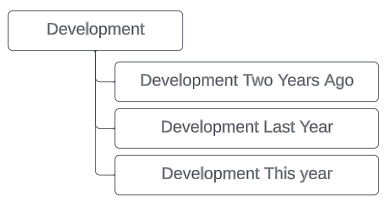While working with a Salesforce client recently, I noticed they used an interesting reporting structure.
There was a report folder called “Development”, used by the development team. Under that were several subfolders, one per calendar year.

The reports in each subfolder were slightly different, and some in the 2023 folder still had the label of 2021. The report filters were also inconsistent. Clearly no one was taking ownership of these reports and folders.
So I proposed the following two patterns:
1. Remain with a list of reports on a yearly basis, but create a template folder. Reports in this template folder are the gold standard. At the start of the new year, a report manager should copy the reports from the template folder into a new folder for the year, and then update the report filters accordingly.
If a new report needs to be added for the current year only, it should stay in that folder. But if it needs to persist year-over-year, it should be copied to the template folder. The result looks like this:

2. Instead of using absolute dates in the report filter, use relative dates as filters (e.g. “THIS YEAR” instead of “2023”). This means only a handful of reports are needed, and once they are built (for as many years back as needed), they never need to change. The result looks like this:

The takeaway
Remember that reports that use dates filters can use leverage absolute dates or relative ones. Be sure to apply the appropriate pattern based on you clients’ actual needs.
